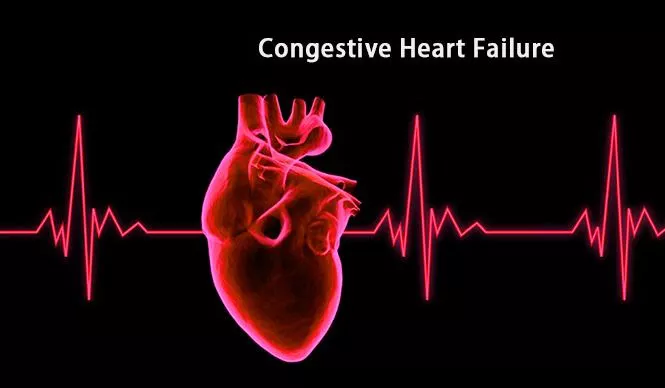Congestive Heart Failure (CHF) is a complex condition where the heart cannot pump blood effectively, leading to fluid accumulation in the lungs and other parts of the body. Diagnosing CHF involves a combination of clinical evaluation and various diagnostic tests. This article will detail the tests commonly used to diagnose CHF, providing insights into their purpose, procedures, and significance.
Clinical Evaluation
The first step in diagnosing CHF is a thorough clinical evaluation. Healthcare providers assess the patient’s medical history and symptoms, which may include:
- Shortness of breath
- Fatigue
- Swelling in the legs, ankles, or abdomen
- Rapid or irregular heartbeat
- Persistent cough or wheezing
During this evaluation, the healthcare provider will also check for risk factors such as hypertension, coronary artery disease, diabetes, and a family history of heart disease. A physical examination may reveal signs of fluid retention or abnormal heart sounds.
Diagnostic Tests
Several tests are employed to confirm a diagnosis of CHF. Each test provides unique information about the heart’s structure and function.
1. Blood Tests
Blood tests are crucial in diagnosing CHF. They help identify underlying conditions that may contribute to heart failure. Key blood tests include:
B-type Natriuretic Peptide (BNP) Test: Measures levels of BNP, a hormone released by the heart in response to increased pressure.
see also: What Are The 4 Stages of Diastolic Heart Failure?
Elevated BNP levels indicate heart failure.
Complete Blood Count (CBC): Assesses overall health and detects conditions like anemia that can exacerbate heart failure.
Thyroid Function Tests: Evaluates thyroid hormone levels, as both hyperthyroidism and hypothyroidism can affect heart function.
2. Electrocardiogram (ECG or EKG)
An ECG is a non-invasive test that records the electrical activity of the heart. It helps identify:
- Arrhythmias (irregular heartbeats)
- Previous heart attacks
- Left ventricular hypertrophy (thickening of the heart muscle)
The procedure involves placing electrodes on the chest to capture electrical signals, which are then displayed as waveforms on a monitor.
3. Chest X-ray
A chest X-ray provides images of the heart and lungs. It can reveal:
- Enlarged heart size
- Fluid accumulation in the lungs (pulmonary congestion)
- Other lung conditions that may mimic or contribute to CHF symptoms
This test is typically quick and involves minimal exposure to radiation.
4. Echocardiogram
An echocardiogram uses sound waves to create detailed images of the heart’s structure and function. It assesses:
- Ejection fraction (the percentage of blood pumped out of the heart with each beat)
- Heart chamber sizes
- Valve function
Echocardiograms can be performed in several ways:
Transthoracic Echocardiogram (TTE): The most common type, where a transducer is placed on the chest.
Transesophageal Echocardiogram (TEE): Involves inserting a transducer down the esophagus for clearer images, particularly useful in certain cases.
5. Stress Testing
Stress tests evaluate how well the heart functions during physical activity. They can be performed on a treadmill or stationary bike while monitoring ECG changes and blood pressure responses. If a patient cannot exercise, medications may be administered to simulate exercise.
6. Cardiac MRI
Cardiac Magnetic Resonance Imaging (MRI) provides high-resolution images of the heart’s structures and can assess myocardial viability and function without radiation exposure. This test is particularly useful for evaluating complex cases or when echocardiographic results are inconclusive.
7. CT Scan of the Heart
A Cardiac CT scan uses X-rays to create cross-sectional images of the heart and surrounding structures. It can help identify coronary artery disease by visualizing blockages in coronary arteries.
8. Coronary Angiography
This invasive procedure involves threading a catheter through blood vessels to inject contrast dye into coronary arteries, allowing visualization via X-ray imaging. It helps identify blockages that may require intervention.
9. Myocardial Biopsy
In rare cases, a myocardial biopsy may be performed to obtain small samples of heart tissue for examination under a microscope. This test helps diagnose specific types of cardiomyopathy or other diseases affecting cardiac muscle.
10. Radionuclide Ventriculography (MUGA Scan)
This test evaluates how well blood is pumped out of the heart’s chambers during each heartbeat using radioactive material injected into a vein. It provides information on ejection fraction and overall cardiac function over time.
Staging Heart Failure
Once diagnosed, CHF is classified into stages based on severity:
Class I: No symptoms during normal activities.
Class II: Mild symptoms with exertion but comfortable at rest.
Class III: Symptoms with minimal exertion; comfortable only at rest.
Class IV: Symptoms present even at rest; severe limitations on physical activity.
Understanding these stages aids in determining appropriate treatment strategies tailored to individual patient needs.
Conclusion
Diagnosing congestive heart failure requires a comprehensive approach that combines clinical evaluation with various diagnostic tests. Each test plays a critical role in confirming the diagnosis and guiding treatment decisions. Early detection and accurate diagnosis are essential for effective management of CHF, ultimately improving patient outcomes and quality of life.
Related topics:


